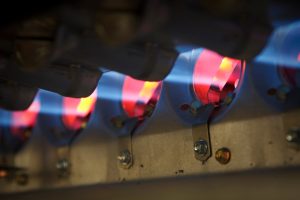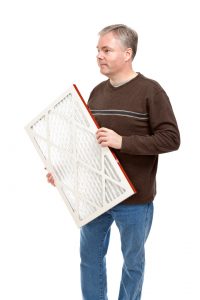 We want to be clear about this from the start: Only a trained, licensed HVAC professional should repair a gas furnace. This is a matter of safety—although even if it were safe to tinker with a gas furnace on your own, you’d still only want a trained professional to touch the system to make sure the repair is done right. In many jurisdictions, it’s illegal for anyone without a special license to work on an appliance connected to a gas main.
We want to be clear about this from the start: Only a trained, licensed HVAC professional should repair a gas furnace. This is a matter of safety—although even if it were safe to tinker with a gas furnace on your own, you’d still only want a trained professional to touch the system to make sure the repair is done right. In many jurisdictions, it’s illegal for anyone without a special license to work on an appliance connected to a gas main.
In this post we’re making a distinction between trying to repair a gas furnace and going through basic troubleshooting steps when a furnace isn’t working properly. There’s nothing wrong with making checks on a furnace before you call us for heating repair in Plattsburgh, NY. Often, the problem with a non-working furnace is something simple you can correct on your own. Just don’t take any steps where you need to get tools and open up the furnace! That’s the point where you’ve gone past troubleshooting and might get into actual trouble.

 If we had to select the best month for scheduling
If we had to select the best month for scheduling  If you have a furnace in your house that’s more than 15 or even 20 years old, any replacement system will have a higher energy efficiency rating. This because standard for gas furnaces have changed dramatically over two decades, and even the new mid-efficiency models have a higher standard than the mid-efficiency models at the start of the 21st century.
If you have a furnace in your house that’s more than 15 or even 20 years old, any replacement system will have a higher energy efficiency rating. This because standard for gas furnaces have changed dramatically over two decades, and even the new mid-efficiency models have a higher standard than the mid-efficiency models at the start of the 21st century. The winter weather isn’t done with us, but the second half of the season is a good time to consider how well your home’s furnace has held up. This may be the last winter it can perform up to expectations. Or it may already have fallen behind this season. If you’ve spent more on
The winter weather isn’t done with us, but the second half of the season is a good time to consider how well your home’s furnace has held up. This may be the last winter it can perform up to expectations. Or it may already have fallen behind this season. If you’ve spent more on  When a furnace first turns on for the winter season, it emits a burning odor into the air from the vents. This is normal. It’s odor of the dust along the heat exchanger or heating elements burning off as the unit heats up. The smell will subside after a short time and the furnace will get into the regular groove of warming the house.
When a furnace first turns on for the winter season, it emits a burning odor into the air from the vents. This is normal. It’s odor of the dust along the heat exchanger or heating elements burning off as the unit heats up. The smell will subside after a short time and the furnace will get into the regular groove of warming the house. What sort of home appliance do you think is most likely to corrode? You’ll probably think of the water heater, or shower heads and other water-using fixtures. You probably don’t think about your gas furnace rusting. It doesn’t use water to warm your house, after all. It applies heat to the air through a metal heat exchanger that contains hot combustion gas.
What sort of home appliance do you think is most likely to corrode? You’ll probably think of the water heater, or shower heads and other water-using fixtures. You probably don’t think about your gas furnace rusting. It doesn’t use water to warm your house, after all. It applies heat to the air through a metal heat exchanger that contains hot combustion gas. When heating season starts (a.k.a. “winter”), your home’s furnace will get down to steady work. That means you’ll have the semi-regular job of keeping an eye on it. This isn’t an intense job, only a reminder to keep your senses open to any of the signs the furnace is in trouble—and to remember to change the furnace filter on a regular schedule.
When heating season starts (a.k.a. “winter”), your home’s furnace will get down to steady work. That means you’ll have the semi-regular job of keeping an eye on it. This isn’t an intense job, only a reminder to keep your senses open to any of the signs the furnace is in trouble—and to remember to change the furnace filter on a regular schedule. How do you keep your home toasty during the cold winters in Vermont and New York? The majority of homes use natural gas furnaces, but there are many that rely on boilers, electric furnaces, in-floor radiant systems, heat pumps, and dual fuel systems. Our heating technicians work with all these types of
How do you keep your home toasty during the cold winters in Vermont and New York? The majority of homes use natural gas furnaces, but there are many that rely on boilers, electric furnaces, in-floor radiant systems, heat pumps, and dual fuel systems. Our heating technicians work with all these types of 





